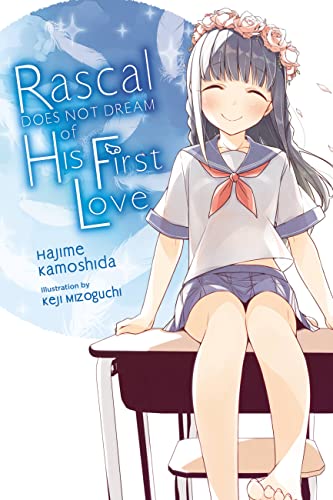By Hajime Kamoshida and Keji Mizoguchi. Released in Japan as “Seishun Buta Yarou wa Randoseru Girl no Yume wo Minai” by Dengeki Bunko. Released in North America by Yen On. Translated by Andrew Cunningham.
My favorite episode of Urusei Yatsura (the original, not the 2022 reboot) has Lum end up in various alternate universes and unable to get back to the correct one. We see one where everyone is the opposite gender, one where her father actually invaded and everyone hates her, etc. Towards the end, she finds a world where everything seems to be absolutely perfect… including an Ataru who actually looks to be as handsome as she sees him, saying that he loves her. The look on her face when she hears “I love you” and knows that it’s the wrong world again may be the most heartbreaking moment in the series, topped only by her little “bye bye” as she flees, trying again to get back to HER Ataru. If you’re wondering what all this has to do with Rascal Does Not Dream, then I urge you to read this volume, which may be Sakuta’s best to date.
Things are going reasonably well for Sakuta. He’s still studying hard so he can go to college with Mai, Kaede has decided to start high school at the remote learning place, and he and Mai remain lovey-dovey (or at least as lovey-dovey as Mai ever gets). There’s even more good news coming – Sakuta and Kaede’s mother is getting released from the hospital and being allowed to go home, and she wants to see Kaede. Sakuta is naturally worried about how things will go, and does his best to be a good big brother and strong grownup for his sister. And indeed, things go very well. The reunion is a big success! The only trouble is that Sakuta is still running into the little girl version of Mai. Oh, yes, and one other problem – no one can see him anymore.
The callback to the very first book (though Sakuta does not wear a bunny girl outfit, or even consider it, which makes me sad) is appropriate given that this book pretty much resolves all the major plot points that were outstanding in the series to date. Sakuta’s parents were a constant invisible pressure on the series, but we only saw his father rarely, and we never saw his mother till this book. The middle part of this book is hideously depressing, especially when (helped by the child Mai) he does get back to a world where people can see him… but it’s the wrong one, and just makes him feel inadequate. Fortunately, Rio and Mai are the same no matter what universe, and give him some support… but unfortunately, the solution is something Sakuta will have to work out on his own.
This is not the final book in the series, but it feels like it is, with Sakuta’s entire third year being skipped as we jump to his graduation. There is more to come, and indeed there are teases for future books in this one, including a new character from Sakuta’s past. For this book, though, it’s all Sakuta. He ma never get a cover picture because of the genre he’s in, but if he did, this would be the book. Also: “Other Sakuta: fix your shit” is hilarious.



